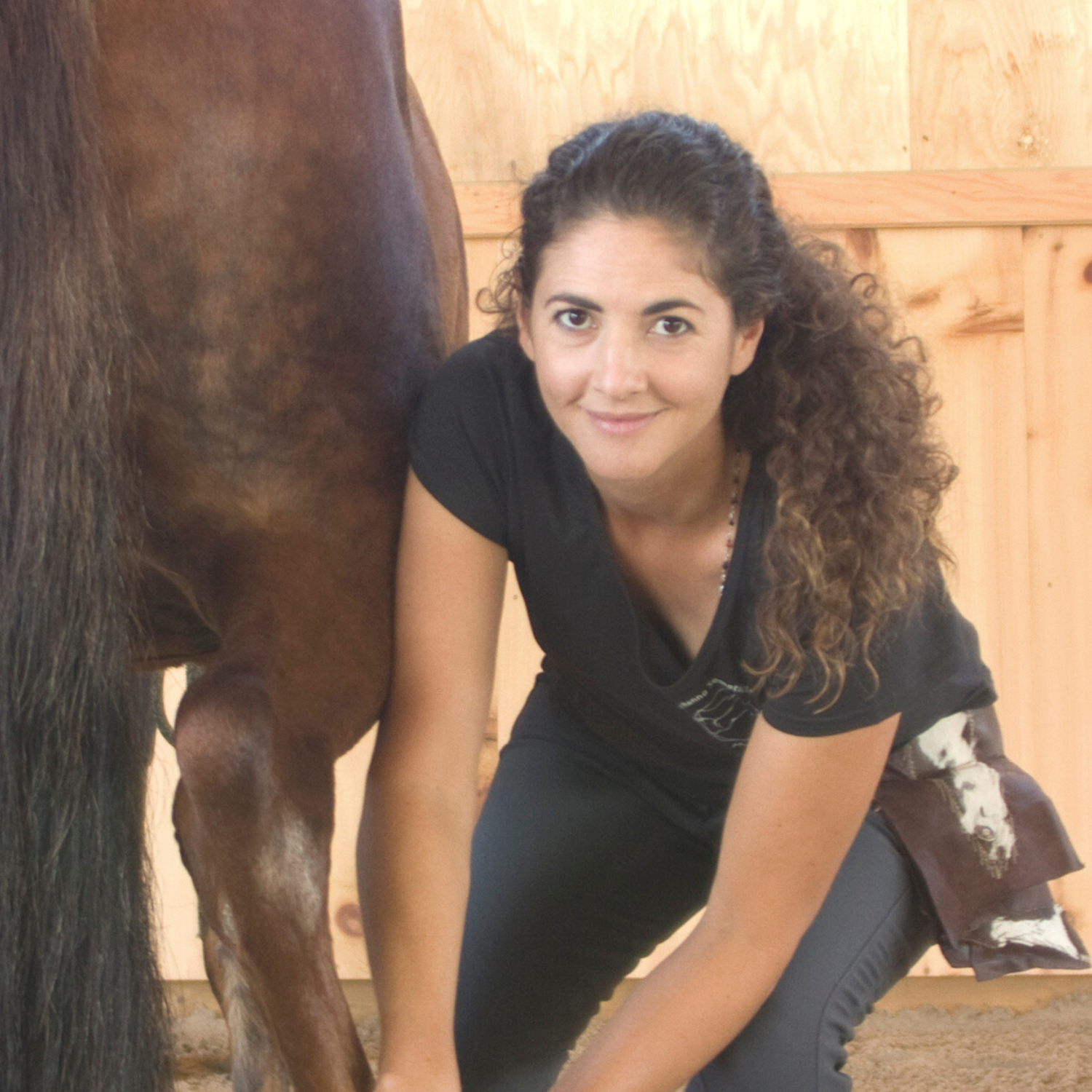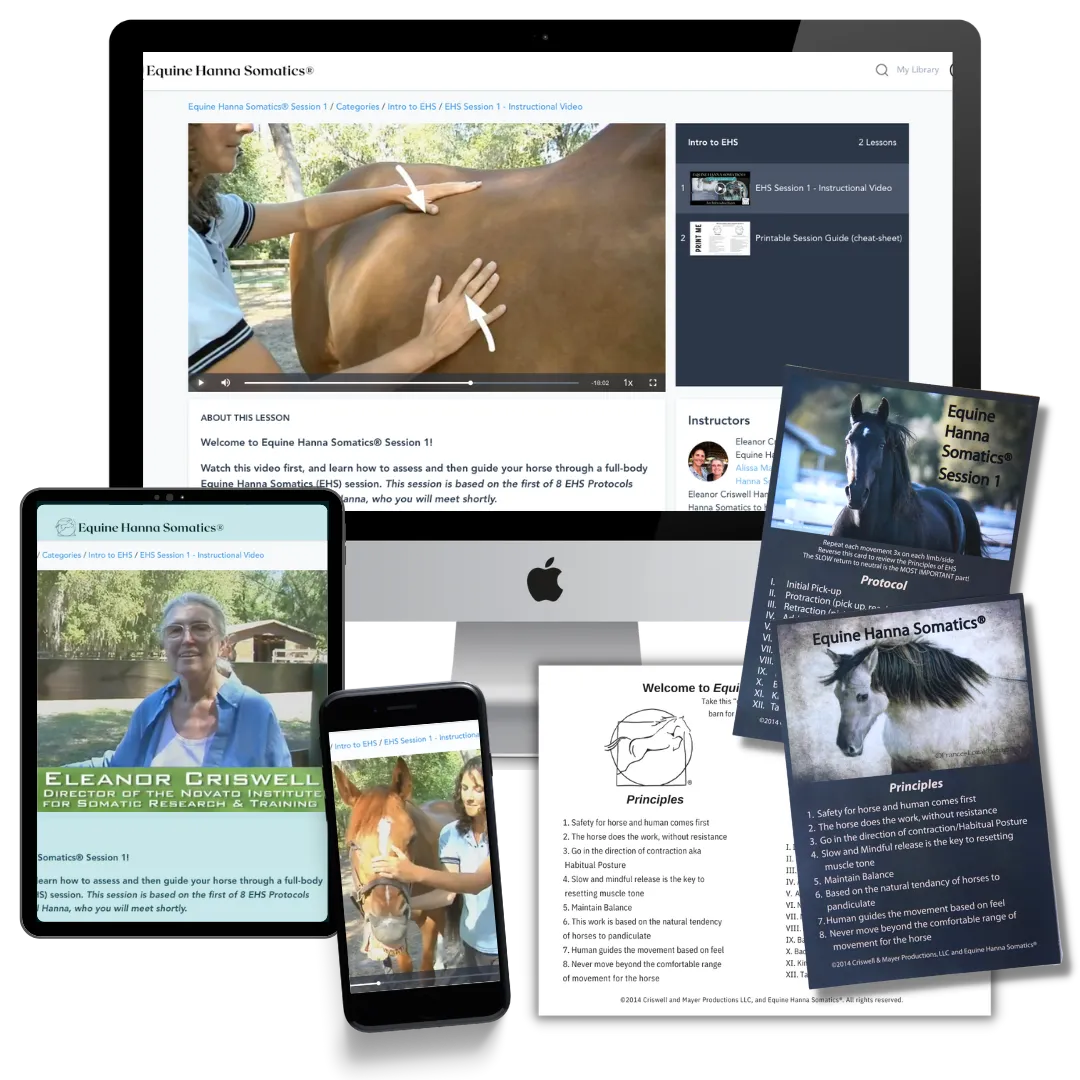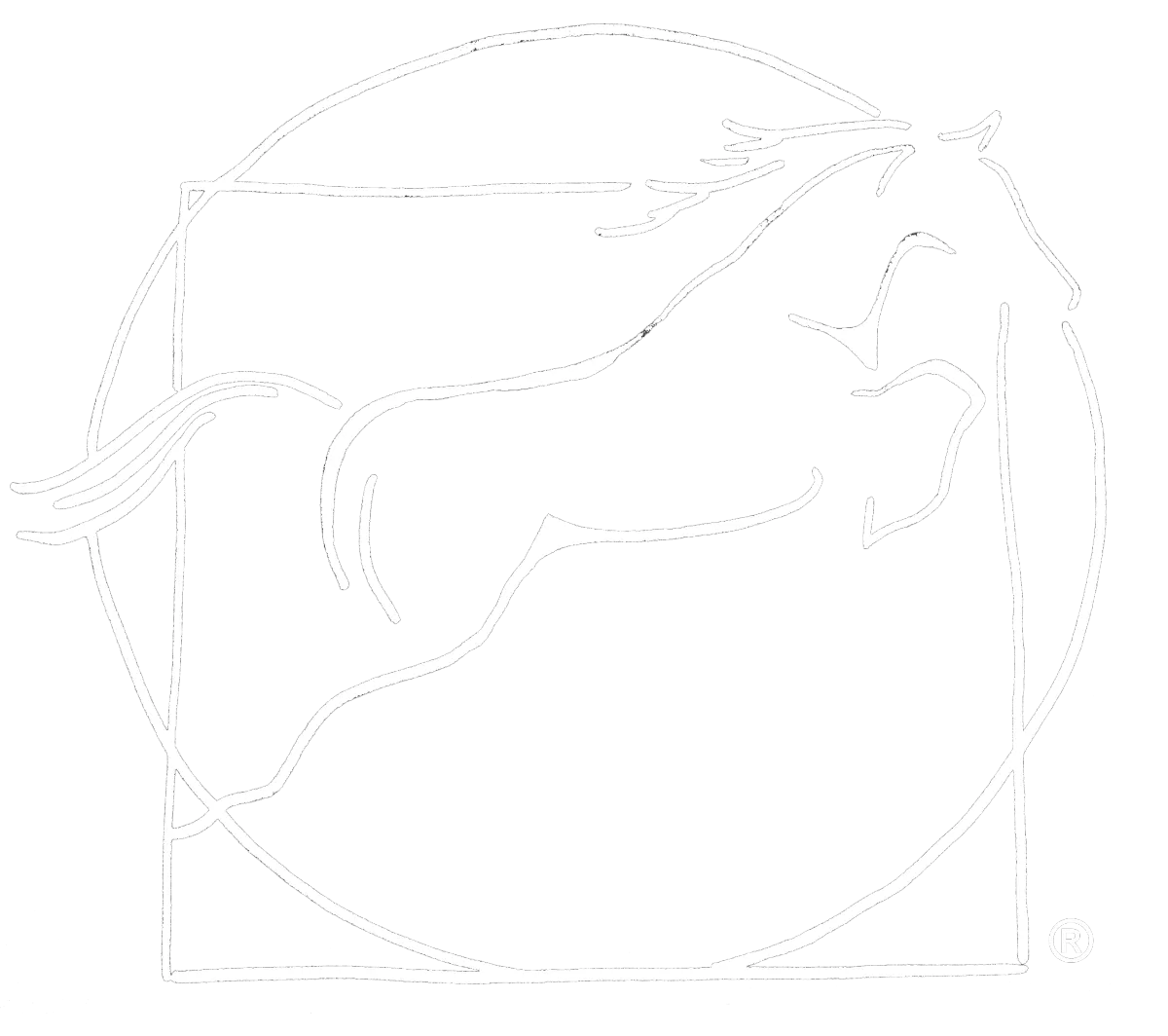"EHS is the Future of Bodywork" (unpacked)
What do I mean when I say Equine Hanna Somatics®(EHS) is the ‘future of bodywork?’
I’m not saying that EHS should replace all bodywork, or that all existing forms of manual therapy, bodywork or therapeutic interventions are somehow inferior to EHS - that couldn’t be farther from the truth.
When I say ‘future’ - I’m talking about evolution and scientific discovery, a process in which the ‘new’ is built upon the current body of knowledge and collective experience of everyone who is or ever has contributed to a field…
The future isn’t replacement for the present, it’s a new development that has the potential to enhance what we are already doing, and give us a new lens, and sometimes new tools, to help us help horses heal and live up to their potential.
And yes, on the surface there are many similarities between various approaches to bodywork and how we work somatically with horses when we do Equine Hanna Somatics®, but underneath, there is one very distinct difference in how we are engaging with the motor-sensory system - and this difference makes ALL the difference in the world!
So what IS it that makes EHS unique in the field of somatics and different from bodywork?
⚠️ STOP ⚠️
Let me start by sharing that I am not trained in, nor have I studied all (or any one) of the different bodywork modalities out there as extensively as I have studied and practiced EHS. I am not an expert or a neuroscientist, but am speaking from my 30+ years of experience working with horses and 15 years as an Equine Hanna Somatics Educator who apprenticed directly with Eleanor Criswell and has been geeking-out on the nervous system ever since. I have worked with thousands of horses and equestrians all over the US and EU in-person, (and more online all over the world), introduced Hanna Somatics to hundreds of equine professionals, trainers, riders bodyworkers and veterinarians, and I have never come across another method that works so specifically with the horse’s brain and motor output, nor offered a comparable level of results or lasting changes, as we see daily with EHS.
In this post, I’m going to lay out for you the main reason why I believe EHS is the future of bodywork, what makes EHS unique in the field of ‘somatics’ and distinctly different from bodywork, and what that difference looks like on the inside of the nervous systems of both the horse and the human practitioner.
If YOU know something I don’t, or believe I have something wrong, after reading the whole post, please share it with me! I am a forever student and lifelong learner, and I’d love to hear from you. I committed to EHS early on when I saw it’s potential to solve most of the issues I was being hired to ‘fix’ as a horse trainer, hoof trimmer and rehabilitation specialist, in a more reliable and efficient way. The day I find something that works better or makes more sense, you’ll hear about it!
⚠️ OKAY, read on. 👇
So what makes Equine Hanna Somatics so unique and effective?
The simple answer is that EHS is a motor intervention, rather than a sensory one.
Let’s unpack that statement tho - because there is a lot in there.
The Motor-Sensory System
First, let’s acknowledge that the motor-sensory system exists in a living body as an infinite, unbreakable loop inside the nervous system, by design. The sensory side consists of all the sensory input coming into the body from the outside (exteroception) or generated from the inside by receptors scattered all throughout the various organs (interoception) and tissues like joints, muscles and fascia (proprioception).
As bodyworkers, physiotherapists or veterinarians work ‘on’ horses, they are providing a myriad of different types of sensory input to the nervous system.
The motor side consists of all the excitatory and inhibitory motor output (impulses) generated by various areas of the brain and spinal cord, and delivered to the muscles all over the body, causing them to contract and produce the forces that create movement and contribute to the biotensegrity of the whole body.
Manual therapy, bodywork and most alternative therapeutic applications work by providing specific types or quantities of sensory input to the nervous system, in various ways. This sensory input may or may not inspire a motor response from the horse. Some interventions inspire very predicable or specific motor responses, while others are more general and unpredictable, but the emphasis is on the sensory inputs.
With EHS, there is also sensory input involved - because it’s happening all the time and we can’t stop it - but when we put our hands on the horse to invite a voluntary pandiculation (which is the bulk of what we do in our sessions), we are not using a particular type of touch, or pressure, or applying a technique to the tissues, nor looking for any specific response from the tissues. We use our hands to communicate an idea to the horse. We touch the horse because we can’t explain verbally what we want the horse to do - “pick up your foot, extend your leg out in front of you, and very slowly bring it back underneath you to put your foot back on the ground and weight it.”
The sensory input we provide is non-specific and variable, and if you can communicate to your horse what to do without touching them at all, the EHS session will still be effective, or may even be more effective, than if you have your hands on the horse, because the changes come from the horse changing their motor output.
This is what makes EHS a ‘motor intervention’ and bodywork a ‘sensory intervention.’ They may look the same on the surface at times, but what is happening inside the nervous system of both the horse AND of the human practitioner is quite different.
And this is where it gets really interesting…
EHS is a Motor-Intervention VS. Bodywork is a Sensory Intervention
When a bodyworker applies a technique to a horse, whether it’s hands-on massage or mobilization, stimulation of points with pressure, energy or needles, gentle spinal manipulation, or a machine modality - the human is producing a lot of motor output during the session, moving their body about, working hands-on to apply their techniques, fiddling with their equipment, moving the horse around, etc.
The horse is largely a passive participant in bodywork, allowing the human to do their work, and receiving the sensory inputs provided. At times the horse also produces motor output, either in response to something the practitioner does (blinking, yawning, moving, even pandiculating) or in response to the environment (flies, handler, grass, wind, feed-cart rolling by, etc.) - but the motor responses are mostly non-specific and variable. The emphasis is on the sensory experience being provided to the horse.
When an Equine Hanna Somatics Educator works with a horse, they are also producing motor output to control their own body as they move around the horse, and providing various sensory inputs to the horse, but the purpose of each human movement or touch is to inspire the horse to produce their own motor output in response.
There are various ways to ask a horse to do one of the basic somatic movements, which is why the type of sensory input we use is generally non-specific and frankly not very important other than it shouldn’t be too distracting, shouldn’t trigger a reflex or conditioned cue, shouldn’t be forceful, painful or ticklish or threatening, etc.
The horse is an active participant in EHS, not moving randomly or spontaneously, but is producing a highly specific type of motor output during our sessions.
Levels of Nervous System Engagement in Hanna Somatics
The motor output we are asking for during a Voluntary Pandiculation exercise comes from the voluntary motor cortex of the horse’s brain - which only happens when the horse does a voluntary movement (and does it slowly enough).
The motor output we are asking for during Kinetic Mirroring comes from the spinal cord, and happens when the Golgi Tendon Organs are stimulated. And occasionally we use a technique called Meanswhereby, which is similar to a passive range-of-motion movement that is performed by the human - but this is only used when the horse is having difficulty understanding what we are asking, or in finding or feeling the part of their body we are asking them to move.
The emphasis in EHS is on the voluntary motor output being produced by the horse, specifically during both the concentric and eccentric phases of muscle contractions. This is what makes Hanna Somatics a motor intervention, vs. a sensory intervention like bodywork.
In both cases, the human practitioner is using a lot of motor output to control their own body, and is providing sensory input to the horse’s body. In both cases the horse is also producing motor output and receiving sensory input.
The difference is in the specificity, the emphasis, and the level of active nervous system engagement - and in the results.
In Summary
Bodywork applies specific sensory input via specific techniques targeted at specific musculoskeletal tissues; the horse’s motor output is variable and non-specific, and the horse offers spontaneous responses.
EHS makes use of non-specific sensory input as communication; the horse’s motor output is highly specific and comes from particular areas of the central nervous system, and the horse is asked for deliberate voluntary responses.
The big-picture goals of bodywork and Hanna Somatics are very similar, and often the initial outcomes are also similar - but results differ in degree, how long they last and whether they need to be repeated or supported with additional training or strengthening… but these we’ll save for another time to discuss!
So when I say that ‘Equine Hanna Somatics is the future of bodywork,’ I’m not suggesting that EHS is going to replace bodywork.
I’m saying that I believe EHS is the next natural step in the evolution of our field, and I want to live in a world where all horses are free from their accumulated habitual tension so they can live up to their potential and find joy in movement again - and every day!
🦄




